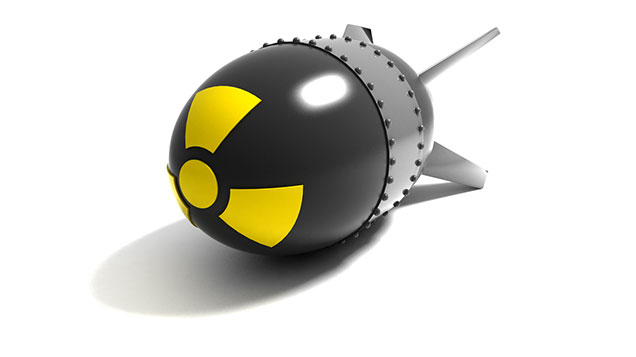1. The threat is real and present.
We’re not fear mongers; we’re realists. In 2006, the Lugar Survey on Proliferation Threats and Responses [.pdf] (a report issued by the Chairman of the Senate Foreign Relations Committee) polled 85 national security experts on the estimated risk of a nuclear attack during the next 10 years. The average response was 29%.
There’s no reason to think this threat is reduced. In July 2013, the Director General of the International Atomic Energy Agency (IAEA) said that, “The threat of nuclear terrorism is real, and the global nuclear security system needs to be strengthened in order to counter that threat.”
2. The United States pursued political and technological solutions.
Since 11 September 2001, tremendous diplomatic and technical efforts have gone into increasing security of nuclear weapons stockpiles around the globe, particularly in the former Soviet republics.
The Department of Homeland Security (DHS) has complemented source security with transit detection: the U.S. has deployed an estimated 3,000 radiation portal monitors at the Canadian and Mexican borders, international mail centers, and shipping ports.
3. Costs have been out of control.
The gold-standard material for radiation detectors is He-3, a gas that is a byproduct of nuclear weapons material production. Post-9/11, skyrocketing demand for neutron detectors led to depleted reserves of He-3, and thus very high costs. At the behest of government agencies, the R&D priority was alternative detection materials that could replace He-3…though in the same (expensive, inflexible) portal infrastructure.
The He-3 problem was “solved” with replacement technologies, but this crisis meant that no R&D was focused on bigger solutions: cost reduction, large-surface area, and more flexible designs that could fit rail and airport infrastructure.
The high cost of He-3 and its replacement materials makes scaling of detection infrastructure prohibitively expensive. With technology that’s currently on the market, there are limited solutions for global expansion of the detector architecture.
4. To date: the costs outweigh the benefits.
Since 2003, no fewer than six Congressional Research Reports and 10 Government Accountability Office reports have levied severe criticism on DHS efforts for radiation detection deployment. Problems of cost have plagued the program from the beginning, as have issues of deployment logistics, unusable technology, poor cost/benefit analysis of R&D programs. After a series of Congressional hearings in 2010, the agencies halted purchases of some cost-cumbersome infrastructure and began to re-think detection strategy.
5. New programs focus on protecting cities with networks of detectors.
Researchers are realizing that traffic scanning is an incomplete solution detecting movement or presence of nuclear material. The 2.0 solutions: building networks of detectors that can track nuclear material in larger areas.
Imagine radiation detectors in jersey barriers, trashcans, traffic lights, and other infrastructure, all talking to each other. A network can establish better background readings than a single detector, and thus can recognize a much smaller spike as a real threat, rather than writing it off as background fluctuations.
This new use case for detectors requires technology with equal efficiency to current gold-standard Helium-3 detectors, but at much lower cost. This is going to be nuclear threat reduction, redesigned.

Recent Comments